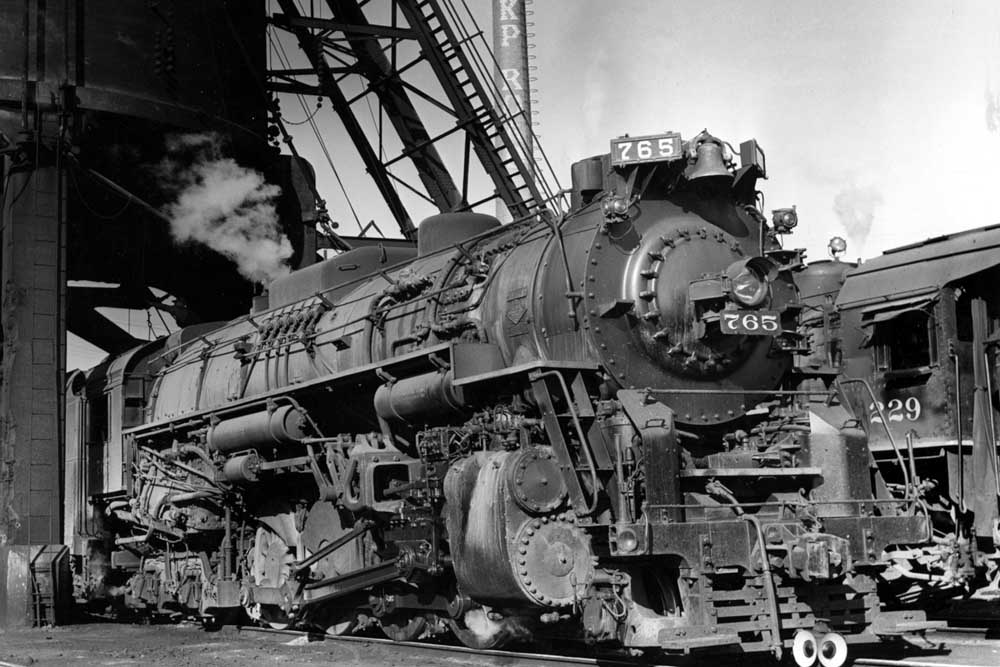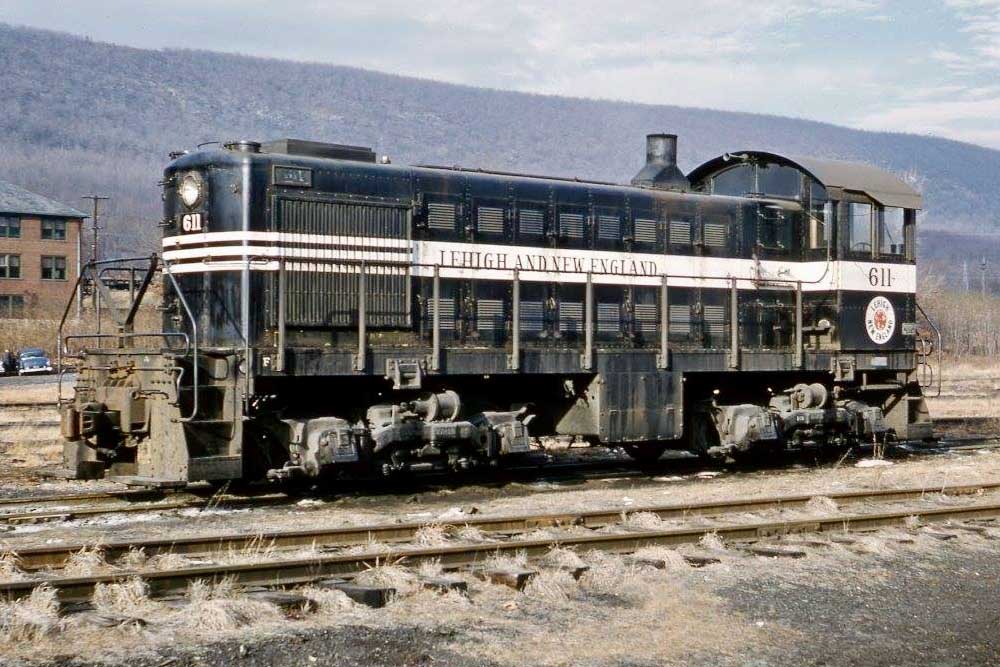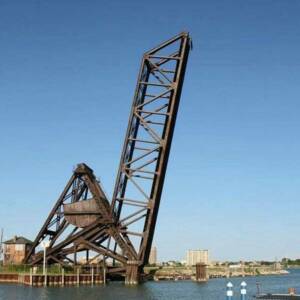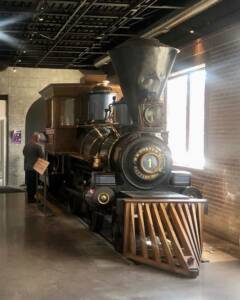Is railroad preservation in ascendance, marked by a succession of triumphs in recent years? Or are we whistling past the wrecking ball and the acetylene torch? Is the glass half full, or half empty?

The stars of a new podcast might answer “both.” Launched a few weeks ago with the title “Ahead of the Torch” and freely available on YouTube, the podcast, known as AOTT, is an attempt to energize a conversation about the future of rail preservation. The presenters promise useful information, frank exchanges, and more than a few laughs. When it comes to saving locomotives or depots, you have to allow for gallows humor.
Our hosts are suitably cast, old enough to have seen the good, the bad, and the ugly of rail preservation, but young enough to still care. They include Kelly Lynch, a media professional and consultant probably best known for his association with the Fort Wayne Railroad Historical Society and its successful operation of Nickel Plate 2-8-4 No. 765; T. J. Gaffney, a Michigan-based museum professional and former executive director of the Steam Railroading Institute; and Rob Davis, a communications pro and chief innovation officer at the global public relations firm MLS U.S. You can learn more about their credentials on the website.
I’ve watched most of their AOTT episodes by now and have to credit these guys for creating a welcoming and entertaining space. Although they obviously enjoy each other’s company, they’re also willing to mix it up — unafraid to disagree. A bit of heat as well as light is always welcome.
Their topics should be familiar to anyone who’s ever scraped their knuckles on a steam locomotive boiler or begged for private or public money or tried to motivate unruly or recalcitrant volunteers. Underscoring everything they talk about is the idea — the necessity, really — that rail preservation constantly renew itself with a “next generation” of true believers.
A central event for all three was the publication in 2018 of Jim Wrinn’s “Ten Rules for Railway Preservation,” which the late Trains magazine editor created in the wake of the meltdown that year of the Indiana Transportation Museum. Justifiably shocked by the sudden dissolution of a rather substantial institution — its equipment and collections scattered to the four winds — Jim felt he needed to sound an alarm.
Davis, Lynch, and Gaffney were listening. “Jim’s commandments are timeless and need to be heard far beyond rail preservation,” says Davis, who responded at first with AOTT as a blog. “The issues (Wrinn) discussed relate to preservation groups, museums and non-profit organizations of all kinds.”

Davis knows whereof he speaks. He is deeply involved in the Railway & Industrial Preservation Society and its efforts to save and operate Lehigh & New England No. 611, an Alco S2 built in 1948 and moved not long ago to Kutztown, Pa., after years of working a grain elevator in Indiana. His blog struck a chord with the wider preservation audience and soon he was hearing from T. J., who suggested turning the AOTT concept into a Facebook page.
Gaffney explains: “All three of us were disciples of editor Mark Smith of Locomotive & Railway Preservation magazine fame, as well as contributors and followers of the Railway Preservation News site when it was administrated by Erik Ledbetter. When I approached Rob about an AOTT Facebook page, it came out of a sense that there was a new generation of preservationist coming along that, in essence, was ‘re-saving’ what had been saved before, as well as a need to document what was still unpreserved out there before it was too late.”

Gaffney knows both the joy and the sting of rail preservation, both coming in his hometown of Port Huron, Mich. He was a prime mover in the recent restoration of the 2-4-0 D. B. Harrington, just about the prettiest little H.K. Porter engine you could possibly imagine. This gem from 1878 is safe now for posterity at the Port Huron Museum.
Perhaps the success with the Harrington will help T.J. cope with the disappointment of the nearly simultaneous loss of the city’s iconic Pere Marquette Railway bascule bridge, which he fought so hard to save. (Looking for a villain? See: Port Huron Yacht Club.) For a war-weary Gaffney, “Ahead of the Torch” is probably therapeutic.
And now AOTT is a podcast, ready to be beamed onto smartphone screens and into earbuds everywhere. Described by Gaffney as the “driving force” behind creating the podcast, Kelly Lynch recognized YouTube and its ubiquity as the perfect tool for reaching a larger community.

“There is no Rail Preservation 101, so if there was an Intro to Rail Preservation Class, regardless of your age or experience, this seemed like it could be it,” explains Lynch. “This knowledge should be free, but it also needs to be easily discoverable. YouTube takes it a step further because there is no paywall, it greatly informs search engines, and it’s fairly easy to stumble upon if you’re already watching railroad-related content, so hopefully as our peers and replacements come along there can be something useful that gets passed along.”
For Davis, the path to a podcast goes back more than 20 years.
“By the time I reached my early 20’s, I had a decidedly activist attitude towards the preservation of railroad and industrial artifacts: shut up and save it,” he says. “The velocity of losses in the 1990s threatened to take both the ‘saved’ and the abandoned without much notice. Then I had a very simple epiphany: we can’t save what we don’t know about. So, we have to let people know.”
Something as entertaining and as easily accessible as “Ahead of the Torch” should go a long way toward meeting that goal. As for me, I’m changing my podcast habits. A little less music, sports, and politics and a lot more AOTT.













